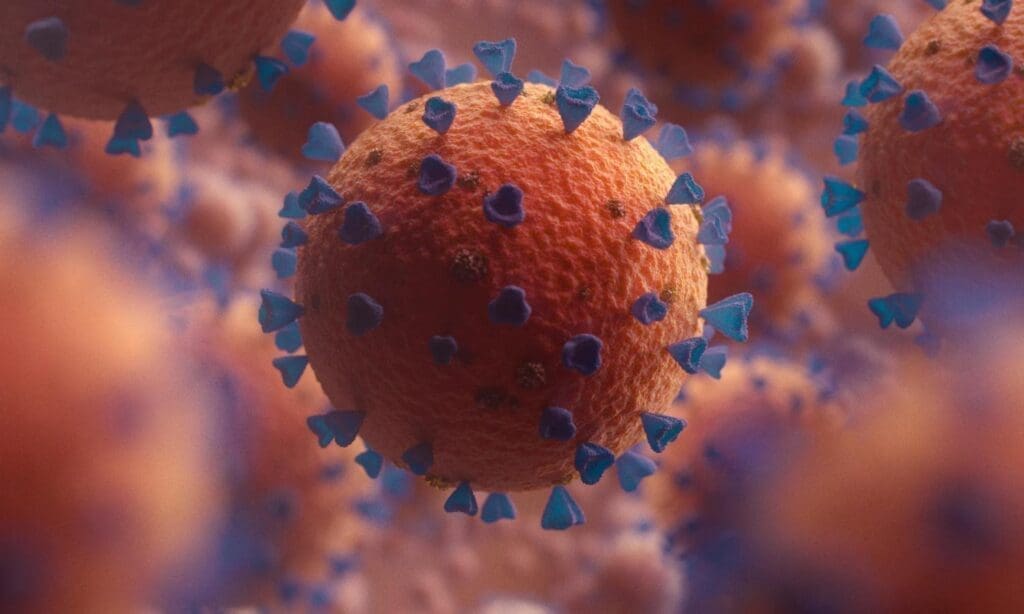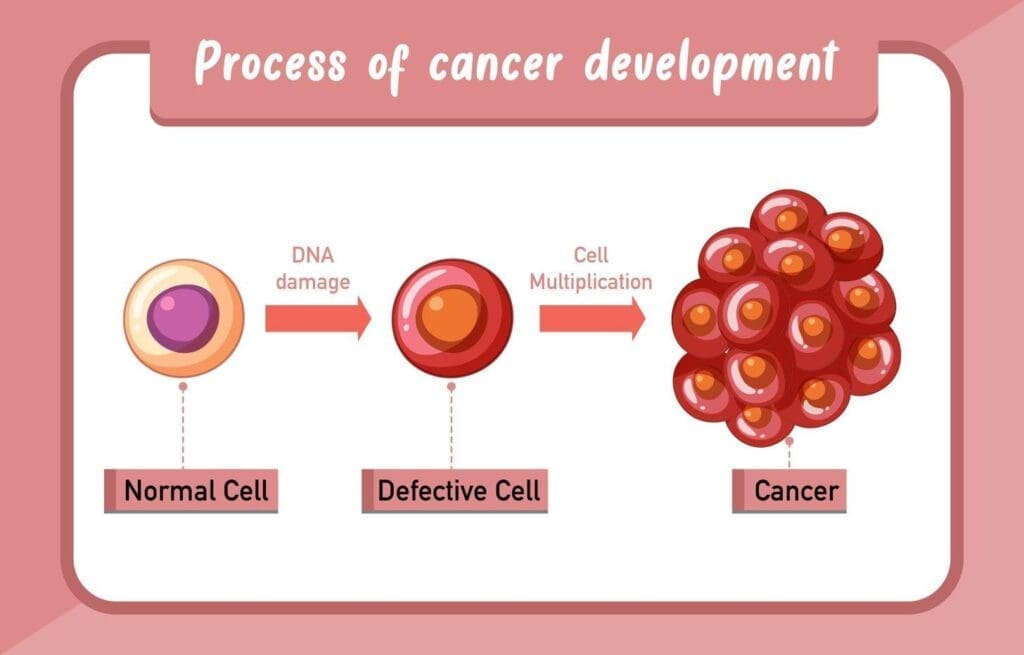Last Updated on November 26, 2025 by Bilal Hasdemir

At Liv Hospital, we know how scary a tumor diagnosis can be. It’s important to know the difference between benign and malignant tumors. A benign tumor is usually not dangerous and doesn’t spread to other tissues. But sometimes, these tumors can turn malignant.
Knowing what makes a malignant tumor is key. Unlike benign ones, malignant tumors spread and can grow in other parts of the body. The change from benign to malignant is rare but complex, influenced by many factors.
Key Takeaways
- Benign tumors are generally not life-threatening but can, in rare cases, become malignant.
- Malignant tumors are cancerous and can invade surrounding tissues and spread.
- The transformation from benign to malignant is complex and influenced by multiple factors.
- Understanding the difference between benign and malignant tumors is important for the right treatment.
- Liv Hospital’s expertise offers complete care for patients with tumor diagnoses.
Understanding Tumors: The Basics of Cellular Growth

To understand tumors, we must know how normal cell growth turns into tumor formation. Tumors are abnormal tissue masses that happen when cells divide too much or don’t die when they should. This can cause various health problems, depending on the tumor type.
Normal Cell Growth vs. Tumor Formation
Normal cell growth is a well-controlled process of cell division, differentiation, and death. But, tumor formation happens when these processes go wrong, leading to uncontrolled cell growth. A key marker for tumor growth is the nuclear protein Ki-67, linked to cell proliferation.
It’s important to know the difference between normal cell growth and tumor formation. Neoplastic diseases are conditions with abnormal cell growth, which can be benign or malignant. Benign tumors are usually not dangerous, while malignant tumors are cancerous and can spread.
The Spectrum of Neoplastic Diseases
Neoplastic diseases cover a wide range, from benign growths to malignant cancers. Benign tumors grow slowly and don’t spread. But, malignant tumors grow fast, invade tissues, and can spread to other parts of the body.
| Characteristics | Benign Tumors | Malignant Tumors |
| Cell Growth | Slow, controlled growth | Rapid, uncontrolled growth |
| Invasion | Do not invade surrounding tissues | Invade surrounding tissues |
| Metastasis | Do not metastasize | Can metastasize to other parts of the body |
Knowing the range of neoplastic diseases is key to diagnosing and treating tumors. By understanding the differences between benign and malignant tumors, doctors can plan the right treatment.
Benign Tumors: Characteristics and Common Types

Benign tumors are not cancerous but can be risky. They have certain traits and can grow in different places. We’ll look at what makes them special, their types, and why they matter in healthcare.
Defining Features of Benign Tumors
Benign tumors don’t spread or invade other tissues. But, they can cause issues because of their size or where they are. For example, a tumor in the brain can press on other tissues, causing symptoms.
These tumors grow slowly and are usually easy to remove. Their cells look like normal cells, unlike cancer cells. This makes them different from malignant tumors.
Common Benign Tumor Types
There are many types of benign tumors, each unique. Here are a few examples:
- Lipomas: These are fat tissue tumors, often under the skin.
- Fibroids: Also known as leiomyomas, these grow in the uterus.
- Osteomas: Benign bone tumors that can happen in any bone.
- Adenomas: These are glandular tissue tumors, like in the colon or adrenal glands.
Clinical Significance of Benign Growths
Even though benign tumors aren’t cancerous, they’re important to watch. Their size and location can lead to symptoms, from mild to serious. For instance, a big tumor in the abdomen can block the bowel or cause other stomach problems.
Some benign tumors can turn into cancer, but this is rare. Doctors might keep an eye on them or remove them to prevent this. It depends on the tumor and the patient’s health.
It’s key to know about benign tumors to help patients. By understanding them, doctors can give better care and advice.
Malignant Tumors: What Defines a Malignant Tumor
A malignant tumor is an abnormal cell growth. It can spread to nearby tissues and distant organs. This makes it a major concern in medicine, affecting patient health.
Key Characteristics of Malignant Tumors
Malignant tumors have distinct features. These set them apart from benign tumors. Key characteristics include:
- Uncontrolled growth: They grow without stopping, invading nearby tissues.
- Invasion: They can spread to nearby organs, causing damage.
- Metastasis: They can move to distant parts of the body, making treatment hard.
- Genetic instability: This unstable genetic makeup makes them aggressive.
Are All Malignant Tumors Fast-Growing?
Not all malignant tumors grow at the same pace. Some grow quickly, while others progress slowly. The growth rate depends on several factors, like the cancer type and the patient’s health.
The Relationship Between Malignancy and Cancer
Malignancy is a key feature of cancer. The terms “malignant tumor” and “cancer” are often used together. But not all cancers are tumors. Some, like leukemia, affect the blood or bone marrow. We will dive deeper into the differences between malignancy and cancer, focusing on their importance in patient care.
Can Benign Cancer Turn Malignant? The Transformation Process
The change from benign tumors to malignant ones is complex. It involves many genetic and molecular changes. Benign tumors are usually non-cancerous and don’t spread. But, some conditions can make them turn malignant.
The Concept of Malignant Transformation
Malignant transformation is when benign cells or tumors start acting like cancer cells. They grow uncontrollably, invade tissues, and can spread. This process is not fully understood but involves genetic and epigenetic changes.
Some benign conditions, like colon polyps, have a higher risk of turning malignant. The risk depends on the type of tumor, its location, and the patient’s health.
Genetic and Molecular Changes During Transformation
The change from benign to malignant involves many genetic and molecular changes. These changes can include mutations in genes that control cell growth. For example, mutations in the APC gene can lead to colorectal cancer.
Epigenetic changes, like DNA methylation and histone modification, also play a key role. These changes affect gene expression without changing the DNA sequence. They help develop malignant traits in benign cells.
For more information on diagnosing cancerous tumors, visit Liv Hospital’s page on diagnosing cancerous.
Timeline and Progression Patterns
The time it takes for a benign tumor to turn malignant varies. Some benign tumors stay benign for years or a lifetime. Others can turn malignant quickly.
It’s important to understand how benign tumors can turn malignant. This helps in developing better surveillance and treatment plans. Regular monitoring is key to catch any changes that might indicate malignant transformation.
Risk Factors for Malignant Transformation
It’s important to know what increases the chance of a benign tumor becoming cancerous. This knowledge helps in catching problems early and preventing them. Several things can make a benign tumor turn into cancer, and knowing these factors is key to managing risk.
Genetic Predispositions
Genetics play a big role in the risk of a benign tumor turning cancerous. People with a family history of certain cancers or genetic syndromes are at higher risk. For example, Li-Fraumeni syndrome or Familial Adenomatous Polyposis (FAP) can greatly increase cancer risk.
Genetic testing can spot people at higher risk early. This allows for early monitoring and intervention. Research shows that certain genetic mutations can lead to cancer in benign tumors.
| Genetic Condition | Increased Risk |
| Li-Fraumeni Syndrome | Sarcomas, breast cancer, brain tumors |
| Familial Adenomatous Polyposis (FAP) | Colorectal cancer |
Environmental Influences
Environmental factors also raise the risk of a benign tumor becoming cancerous. Exposure to UV radiation and tobacco smoke can increase this risk.
“The International Agency for Research on Cancer (IARC) has classified several environmental exposures as carcinogenic to humans, highlighting the importance of minimizing exposure to known risk factors.”
When looking at the risk for people with benign tumors, we must consider these environmental factors.
Lifestyle Factors
Lifestyle choices also affect the risk of a benign tumor turning cancerous. Things like diet, physical activity, and alcohol consumption can influence cancer risk.
Eating a lot of processed foods and not enough fruits and veggies can raise cancer risk. On the other hand, staying active can lower the risk of some cancers.
Knowing these risk factors helps us manage and possibly lower the chance of a benign tumor turning cancerous. Early detection and prevention are key in the fight against cancer.
Common Examples of Benign Conditions with Malignant Potential
Some benign conditions can turn into cancer, so it’s important to watch them closely. Knowing about these conditions helps catch cancer early and manage it better.
Colon Polyps and Colorectal Cancer
Colon polyps are growths on the colon or rectum’s lining. Most are not harmful, but adenomatous polyps can turn into colorectal cancer. The risk grows with polyp size, number, and dysplasia.
Getting polyps removed can lower cancer risk. We suggest colonoscopies for people over 50 or earlier if there’s a family history of cancer.
Uterine Fibroids and Leiomyosarcoma
Uterine fibroids are common, but rare, they can turn into leiomyosarcoma, a cancer. It’s important to treat leiomyosarcoma quickly.
Telling fibroids from leiomyosarcoma is hard because symptoms are similar. We use imaging and biopsies to figure it out.
Moles and Melanoma
Most moles are harmless, but some can become melanoma, a dangerous skin cancer. Watch for size, shape, color changes, or new symptoms like itching or bleeding.
It’s key to check moles often and watch for changes. We use the ABCDE rule to spot moles that might be cancerous.
Other Notable Examples
Other benign conditions that can turn cancerous include:
- Barrett’s esophagus, leading to esophageal adenocarcinoma
- Ductal carcinoma in situ (DCIS), a breast cancer precursor
- Monoclonal gammopathy of undetermined significance (MGUS), which can become multiple myeloma
These examples show why regular health checks and screenings are vital to catch cancer early.
Diagnosis and Monitoring of Potentially Malignant Tumors
Getting an accurate diagnosis and keeping an eye on tumors is very important. We use different methods to check and watch these tumors. This way, we can act fast when needed.
Screening Protocols for High-Risk Benign Tumors
Screening is key for finding people with high-risk benign tumors. Regular screenings can spot changes in tumors early. This means we can act quickly.
People at high risk should stick to a screening plan. This might include tests and checks for biomarkers. This helps us catch problems early.
Diagnostic Techniques and Biomarkers
New ways to diagnose tumors have made a big difference. Tools like radiomics and biomarker analysis give us important info. They help us understand how tumors work.
Biomarkers are very important for finding and watching cancer. They show us the genetic and molecular changes in tumors. This helps us target treatments better.
The Role of Biopsy in Determining Malignancy
A biopsy is the best way to know if a tumor is cancerous. By looking at tissue samples, we can tell if it’s benign or malignant.
What we learn from a biopsy is key for treatment. It tells us about the tumor’s type and stage. This helps us decide the best course of action.
Treatment Approaches: From Watchful Waiting to Intervention
Treatment for tumors varies from ‘watchful waiting’ to more aggressive methods. The choice depends on the tumor’s type, size, location, and if it’s benign or malignant.
We’ll look at how to manage benign tumors, when to remove them, and what to do if they turn malignant.
Management Strategies for Benign Tumors
Benign tumors usually don’t need treatment unless they cause problems or could turn malignant. Watchful waiting is common, where doctors monitor the tumor with tests to see if it changes.
In some cases, surgical removal is suggested for benign tumors that bother the patient or could turn malignant. Doctors consider the patient’s health and the tumor’s details before deciding to remove it.
When to Consider Preventive Removal
Deciding to remove a benign tumor depends on its risk of turning malignant, size, and location. For example, some colon polyps are removed during a colonoscopy to prevent colon cancer.
- Risk of malignancy
- Symptoms caused by the tumor
- Patient’s overall health and preferences
Preventive removal is considered if the tumor’s risk of turning malignant is high compared to the risks of removal.
Treatment Options for Malignant Transformation
When a benign tumor turns malignant, treatment gets more serious. Treatment options include surgery, chemotherapy, radiation, or a mix, based on the cancer type and stage.
The main goal is to remove cancer cells and stop it from spreading. Early detection and treatment are key to better outcomes.
Conclusion: Understanding Your Risk and Taking Proactive Steps
Knowing the risks of benign and malignant tumors is key to staying healthy. We’ve looked at the differences between these tumors and how some can turn bad. We’ve also talked about what makes this happen.
By learning about cancer risk and how benign tumors can become malignant, we can take better care of ourselves. A healthy lifestyle, knowing your family health history, and regular check-ups are important steps. These actions help prevent cancer.
It’s important to know that not all tumors are bad. But, knowing the difference between benign and malignant tumors is critical. Malignant tumors need quick treatment, and catching them early makes a big difference. By staying informed and proactive, we can all help reduce cancer risks and improve treatment results.
FAQ
What is the difference between a benign tumor and a malignant tumor?
A benign tumor is not cancer and doesn’t spread. A malignant tumor is cancer and can spread.
Can a benign tumor turn malignant?
Yes, sometimes a benign tumor can turn into cancer. This happens due to changes in its genes and cells.
What are the risk factors for a benign tumor becoming malignant?
Risk factors include genetics, environment, and lifestyle. These can make a benign tumor turn into cancer.
How are potentially malignant tumors diagnosed and monitored?
Doctors use tests and biomarkers to find and watch these tumors. A biopsy is key to check if it’s cancer.
What are the treatment approaches for benign tumors that have the potentially to become malignant?
Treatment varies. It can be watching it closely or removing it early. It depends on the tumor and the person’s risk.
Are all malignant tumors cancerous?
Yes, all malignant tumors are cancer. They can grow and spread to other parts of the body.
What is malignant transformation, and how does it occur?
Malignant transformation is when a benign tumor turns into cancer. It happens through genetic and molecular changes.
Can lifestyle changes reduce the risk of a benign tumor becoming malignant?
Yes, changing your lifestyle can help. It can lower the risk of a benign tumor turning into cancer.
References:
• National Center for Biotechnology Information. (n.d.). The cell: A molecular approach. https://www.ncbi.nlm.nih.gov/books/NBK9963/
• Healthline. (2023). Can benign tumors become malignant? https://www.healthline.com/health/cancer/can-benign-tumors-become-malignant
• Cancer Research UK. (n.d.). How cancers grow. https://www.cancerresearchuk.org/about-cancer/what-is-cancer/how-cancers-grow
• Malignant transformation – Wikipedia. (n.d.). https://en.wikipedia.org/wiki/Malignant_transformation
• Medical News Today. (2019). Difference between benign and malignant tumors. https://www.medicalnewstoday.com/articles/249141






